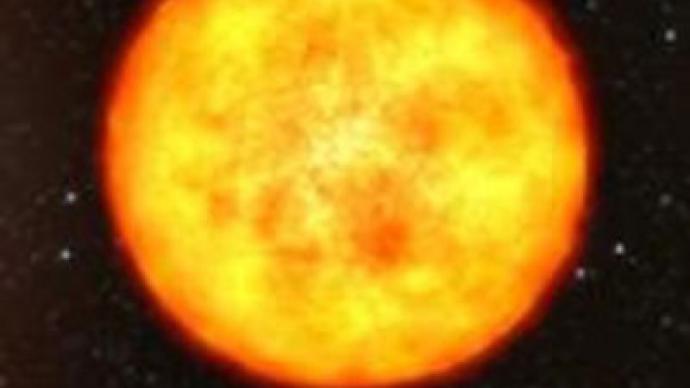Our neighbor star almost as old as universe

A long-known star in the relative proximity to the Solar System is the oldest among the billions humanity has studied. Formed shortly after the Big Bang, it’s now at least astounding 13.2 billion years old.
The star dubbed HD 140283 lies just 190 light years from us and has been known to astronomers for more than a century, reports Nature magazine.Scientists were aware that it must have formed early because it consists almost entirely from hydrogen and helium. Heavier elements simply had not been produced in large quantities by the previous generations of stars by that time and were not present in the primordial gas, from which the stars coalesce.But the exact age of HD 140283 was not known until Howard Bond, an astronomer at Pennsylvania State University in University Park, and his colleagues took a closer look at it. The team made a new and more accurate calculation of the star’s distance from the Solar System using a collection of 11 sets of observations taken between 2003 and 2011.Then they determined its intrinsic luminosity. With HD 140283 being in the later stage or its evolution having almost depleted the hydrogen fuel in its core, the luminosity is a highly-sensitive indicator of the star’s age.Bond and his team calculated that the star is 13.9 billion years old. This actually places it beyond the time that the universe exists. The current estimate is that the Big Bang happened some 13.77 billion years ago. This is explained by an experimental error, which may be as large as 700 million years. So the star is at least 13.2 billion years old and may be several hundred million years older than that.The age is comparable to that of the star known as Methuselah. But Bond believes HD 140283 must be older, as its age has been determined with better confidence.“We believe this star is the oldest known in the Universe with a well determined age,” Bond said this week as he reported the discovery at a meeting of the American Astronomical Society in Long Beach, California.Judging by the trace amounts of elements heavier than helium in it, HD 140283 must have formed after the death of the first short-lived generation of stars, which produced those elements.Later generations could have started forming only after the gas heated by the explosions of those early stars had cooled down enough. The age of HD 140283 indicates that this had happened earlier than astronomers thought.














